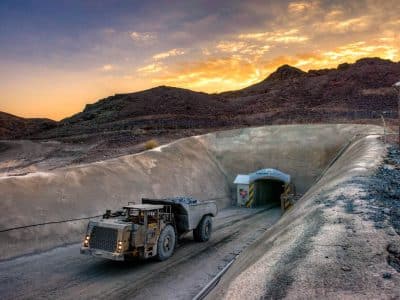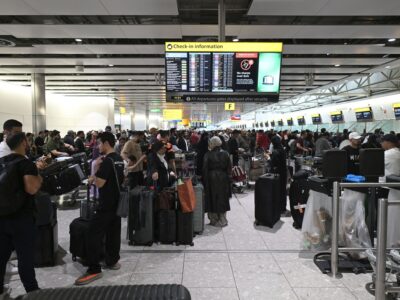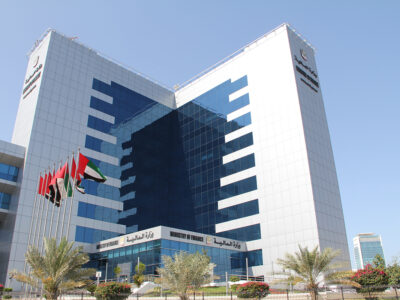How can the energy used in air conditioning systems be optimised? MEP Middle East examines the options available and their potential application in the Gulf region.
With air conditioning accounting for the bulk of energy needs in buildings within the Middle East, applying methods that can optimise the potential of the energy consumed can bring major benefits.
Recovery of energy from the cold exhaust air in an air conditioning system to pre-heat the incoming hot fresh air has major implications for the overall power consumption. And with environmental demands on buildings also growing, finding an effective means to do this has become ever more important.
“The main benefits [of applying energy recovery methods] are energy saving, the reduction of power usage and carbon emissions, plus less initial cost and running cost for building owners,” states Bassel Anbari, managing partner, Intercool.
“Energy recovery is a ‘green technology’ that benefits the owner as well as the user of the building, with lower energy bills without compromising comfort,” adds Trane UAE and Gulf regional director Michel Farah.
“By recycling part of the energy that will otherwise be wasted, heat recovery or energy recovery reduces burning fossil fuels and reduces the use of raw materials, which results in lower CO2 emissions and energy conservation,” explains Farah.
The benefits of using such methods and technologies however are not simply restricted to the individual building owners and users. When employed on a large-scale, energy recovery methods will have wide-reaching effects.
Dr Yehia Amr, engineering director for Carrier Commercial Products in Jeddah, explains: “Regionally it will reduce electricity demand and the rate of additional electrical plants required, allowing for the additional export of oil and increasing regional net income.”
Recovery methods
Several different methods and technologies have been developed that can be applied to recover the energy within an air conditioning system for practical reuse. These include:
• thermal wheels; • heat exchangers; • run-around coils; • heat pipes; • thermal storage systems; • desuperheaters.
“The common principle of all these systems is to recuperate and use the heat that would be rejected to the outside otherwise,” explains Farah.
“The use of such heat will help in down-sizing some equipment such as boilers and fresh air handling units, thus reduce the total energy used or it can also be used to dehumidify the air,” he adds.
The amount of energy that each technology can save will differ according to the variables within the individual air conditioning system. Which method is the most effective is dependent on the individual system involved and certain technologies are more suited to some applications than others.
“In air systems the savings depend on the application. It can be in the range of 20-40% such as its application in fresh air handling units where both temperature and humidity is reduced while passing through an energy wheel that uses the return air to reduce the on coil conditions,” states Farah.
“Or it can be used in providing extra hot water used during the morning peak shower time in hotels or in process cooling, where both cooling and heating is required in different process segments,” he adds.
“The most efficient method [of energy recovery] by far is the heat wheel, recovering up to 70-80% of the energy; followed by the plate heat exchanger, which can recover 45-55%,” says Amr.
“Heat pipes produce a less efficient 25% [energy recovery], but are ideally suited for reducing the relative humidity of supply air, as are run-around coils. If you strictly want to recover energy then use the first two [solutions]; if you also want to reduce humidity you can use the second two, but mainly heat pipes due to their lower maintenance needs.”Thermal wheels are not the ideal solution for all projects however, as Anbari explains: “The use of thermal wheels] is an old method of heat recovery system, which I believe has a disadvantage – cross-contamination between exhausted air and fresh air coming from outside.”
Arguably, rather than focusing on recovering energy within a system, it should first be ensured that the minimum possible energy is used from the outset. Lower energy needs can be established by the application of ASHRAE Standard 62 or by ensuring a high level of maintenance of the equipment.
“I believe [the reduction of outdoor air requirements based on ASHRAE Standard 62] is the most efficient method of energy saving as the air conditioning system can be down-sized by a minimum 25% and still meet the ASHRAE standard for indoor air quality,” stresses Anbari.
“The outdoor air required can be reduced from 20cfm/person to 6 or 7cfm/person provided that the return air is run through a filtration system that will provide supply air equivalent to outdoor air quality. This method is allowed by ASHRAE Standard 62,” he states.
“The easiest way to save energy is by proper equipment maintenance,” adds Amr. “This includes keeping outdoor coils clean and indoor coils free of dirt and organic matter, and equipment properly charged.”
With the mixture of high humidity levels and airborne sand that are experienced throughout the Gulf region, ensuring that the outdoor coils are cleaned as part of a planned maintenance programme can make a significant difference to the amount of energy used in a system over the long-term.
“[Roof-top units] should be visited at least once a month,” advises Amr. “Proper and periodic maintenance keeps the unit performing as close as possible to its design criteria from the comfort and power consumption aspects. Special attention need to be included in the maintenance contracts for a periodic checking and cleaning of fresh air handling units for a durable and efficient system,” adds Farah.
The application of recovery techniques
The application of any energy recovery system must be considered at the outset of a project to enable its effective application. The design of an air conditioning system should include such consideration as standard according to industry experts.
“It is extremely important that all of the above systems or options be considered during the design of air conditioning systems,” stresses Anbari.
“It is always better to consider heat recovery during the design of a project so that equipment is installed with specific heat recovery components. Retro-fitting existing equipment with heat recovery options is difficult,” he adds.
Size and space considerations are among those restrictions for retro-fitting certain types of equipment such as thermal wheels. “Systems must be pre-designed to use a heat wheel or a plate heat exchanger since the exhaust and fresh air sections are typically installed on top of one another and require additional space, especially height,” explains Amr.
When considering the feasibility of applying such heat recovery systems several parameters must be considered, such as the payback period; availability of power; electricity costs; local building codes; and the cost of the power compared to the running costs of the proposed heat recovery system.
“The end-user should evaluate the benefits offered and weigh them against the cost and space required,” advises Amr. “The Middle East is ideally suited to applying these technologies in many applications. They can save significantly on operating costs, improve air quality and reduce humidity; the main issues are initial cost and indoor installations space,” he adds. Changing demands
The increasing number of projects under development in the region, combined with a rising focus on sustainable building and indoor air quality, mean energy recovery within air conditioning systems is an essential topic. However, there is some way to go before it is incorporated in projects as standard.
“The use of energy recovery on fresh air handling units is increasing, however the heat recovery on the water chiller condensers is not widespread, but we’re starting to see interest building up in some projects,” reports Farah.
Currently the most commonly used technologies are thermal wheels and heat pipes, however the potential of some of the other methods is now being applied. “I am an advocate of the reduction of outdoor air requirements and recovering energy from the superheat produced in the condensers of chillers,” states Anbari.
To date, the uptake of energy recovery systems has been lower than potential as there is no Gulf-wide legislation stating that such methods must be employed in all projects. Certain standards do exist that promote their use and further legislation is expected to be implemented in the future.
“There is no standard building code which requires designers and consultants to utilise and design heat recovery systems in every project, however, many consultants are taking the initiative and utilising some of these technologies,” reports Anbari.
Standards such as ASHRAE 90.1 Energy standard for building; and the ASHRAE Green Guide provide consultants with the methods and guidance that should be adhered to when considering the use of energy and heat recovery systems in buildings advises Anbari. The implementation of such methods across all projects however is likely to require legislation to be enforced.
“Right now the move to save energy is driven by end-users, in future it will be driven by green building legislation and the increasing application of LEED (Leadership in Energy and Environmental Design) applications,” states Amr.
“The rise in energy and scarcity of electrical power has been a good wake-up call for governments and end-users. As a result, responsible governments will place the required legislation to more efficiently use these valuable resources,” he adds.
“Green building legislation and LEED certification programmes will compel consultants and designers to implement heat recovery systems and avail the advantages in terms of energy and cost savings. Heat recovery and energy saving systems are most advantageous on large commercial buildings, residential complexes where high cooling loads are required,” adds Anbari.
An increasing focus on the indoor air quality in buildings and a desire by clients and end-users for a high standard of fresh air in occupied spaces is also having an impact on the uptake of heat recovery technologies.
“The top issue today is the volume of fresh air, where designers are still exceeding ASHRAE Standard 62: 2007 requirements by 50-100%,” stresses DC Pro Engineering CEO George Berbari.
“The second top issue is how can we develop the fresh concept beyond double heat recovery as to include IAQ (indoor air quality) sensors on both outdoor air and exhaust air and study the possibility of partial recycling inclusive of ultra filtration, UV lights and carbon filters. Are CO2 absorbers of the exhaust air a future possibility?” he questions.
“With the increasing use of fresh air in new applications, the use of all of these methods is becoming much more significant,” agrees Amr.
“This has been led by the UAE, followed by Kuwait and Qatar in recent years and Saudi Arabia. There is more awareness of IAQ, so people want more fresh air,” he adds. Codes are in place throughout the region that specify the minimum amount of fresh air needed in buildings, with some applications such as hospitals requiring 100% fresh air.
“Even [in systems with] only 20% fresh air, it makes sense to have heat recovery,” stresses Amr. Product development
As the demand to utilise heat recovery methods within air conditioning systems increases, so too does the number of available solutions. Manufacturers are developing new products and technologies aimed specifically at tackling the issue and clients are becoming more accepting of more innovative approaches.
In one instance, DC Pro Engineering has recently analysed the potential use of liquid desiccant technology for Abu Dhabi’s Masdar project, reports Berbari.
The use of bio-polar ionisation, ultra-violet (uv), synthetic or carbon filters to filter return air, hence reduce the fresh air requirement is another new area of significance, states Anbari. The use of desuperheaters to recover rejected heat from condensers is also growing, Anbari adds.
“This technology has been developed by Dunham Bush, a leading manufacturer of air conditioning equipment. It is used to produce hot water to supplement boilers and water heaters in different facilities,” he explains.
Trane’s new CDQ (Cool Dry and Quiet) air handling unit maximises the use of the cooling coil to dehumidify the air by combining an airtight air handling unit with a desiccant type heat wheel to optimise both the temperature and the humidity of the supplied air.
In addition, Carrier 39F air handling units are all offered with heat recovery options. The firm also offers the ultraviolet technology UVC to keep indoor coils free from dirt, fungus and bacteria.
This technology destroys the DNA of any fungus or bacteria in the airstream as well as those that can block the evaporator heat exchanger, thus allowing systems to operate efficiently while delivering more hygienic supply air. The firm is planning to expand its product offering in 2009 to include packaged rooftop units and fan coils that will enable the field installation of UVC technology.
Thermal wheels
Also known as heat wheels, these are installed in air handling units to extract the energy from the cold exhaust air from a building to pre-cool the outdoor air intake before it enters the mixing box or cooling coil.
Typically thermal wheels comprise a metallic, circular, honeycomb unit that rotates, so that 50% of the time it will be in the cold exhaust air where it is cooled down; the remaining time it will be in the hot fresh air stream, pre-cooling the incoming fresh air.
Heat exchangers
Plate heat exchangers comprise layers of corrugated metal plates, with gaps between them to provide passages for airflow. These are installed within or alongside air handling units and are used to transfer cold from the exhaust air to the incoming hot, fresh air supply, thus reducing the load on the system-cooling coil.
The incoming and exhaust airflows are isolated in separate passages within the heat exchanger – separated by the metal plates – removing the possibility of cross-contamination; the cold exhaust air flows in one direction, while the intake air flows in the opposite direction in the adjacent layer, with heat transfer taking place via the metal plates.
Heat pipes
Heat pipes comprise of a pipe that is pre-charged with a gas, which reacts to changes in temperature and transfers heat from one side of the pipe to the other. These are normally installed around the cooling coil for dehumidification purposes in order to remove moisture from the air stream and control humidity without any additional cost.
The first section of the heat pipe is positioned within the incoming fresh air stream; when the warm air passes over the pipe the refrigerant vaporises carrying heat by natural convection to the second section of the heat pipe, which is placed downstream of the cooling coil. In addition to precooling the incoming air, this system reduces the relative humidity of the air entering an area.
Run-around coils
Runaround coil systems comprise two coils or heat exchangers, one each positioned in the hot and cold air streams. Water is circulated between the two heat exchangers by pump, effectively transferring the energy between the two sides of the system.
Thermal storage
Ice or cold water is produced in the air conditioning system during off-peak and/or low electricity tariff periods. This is collected into thermal storage tanks and used as a supplement for the chilled water-cooling system during peak hours.
Desuperheaters
Desuperheaters are used to reclaim the readily available superheat energy that would otherwise be rejected through the condenser in air or water-cooled chillers. This heat can be used to produce hot water to supplement the water heaters or boilers needed for applications such as restaurants, hotels, labour camps, schools and hospitals.







